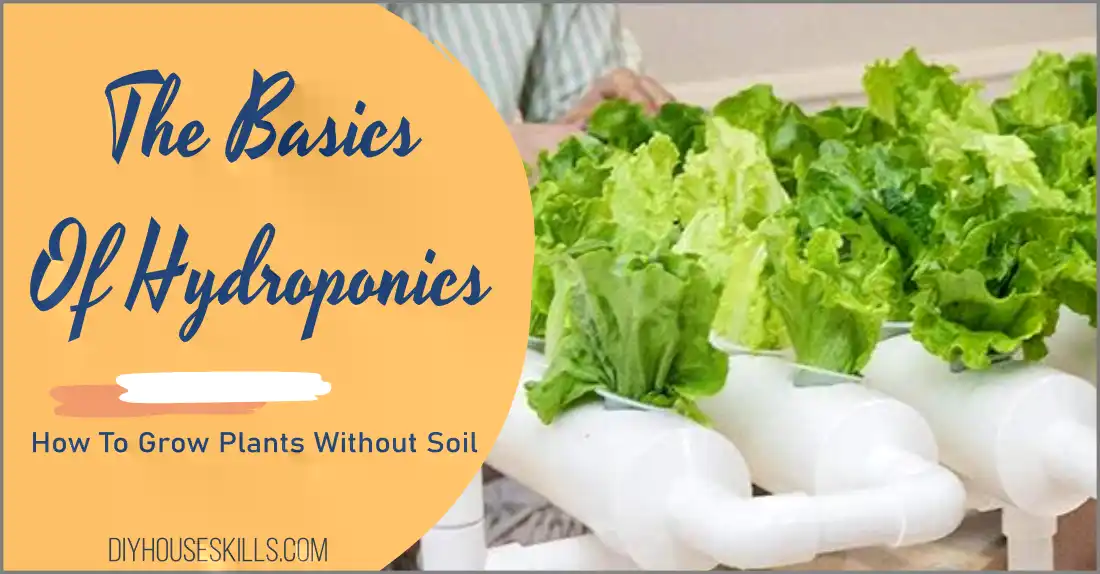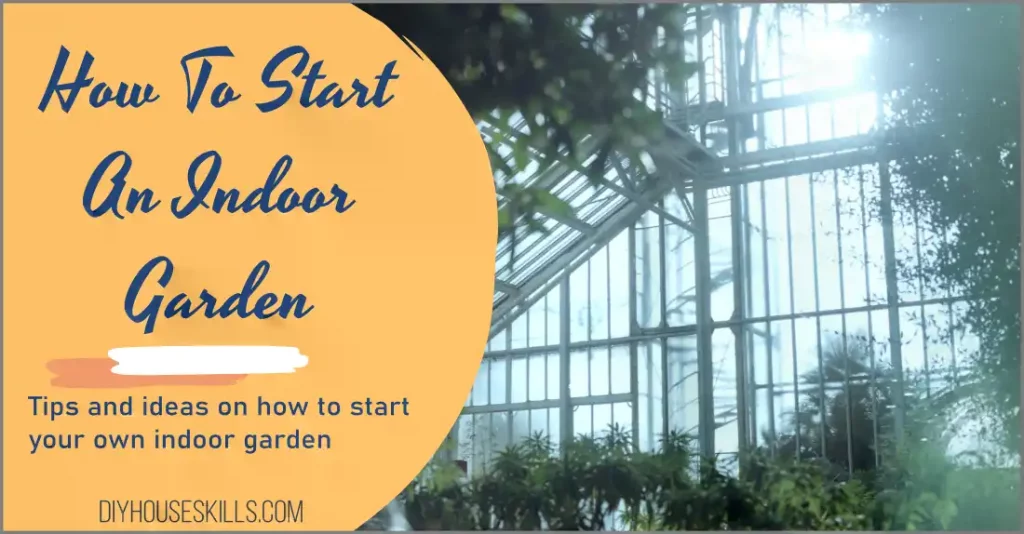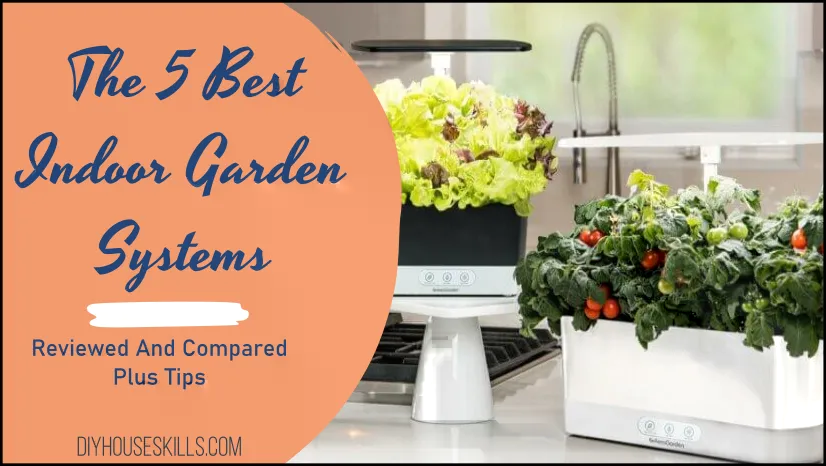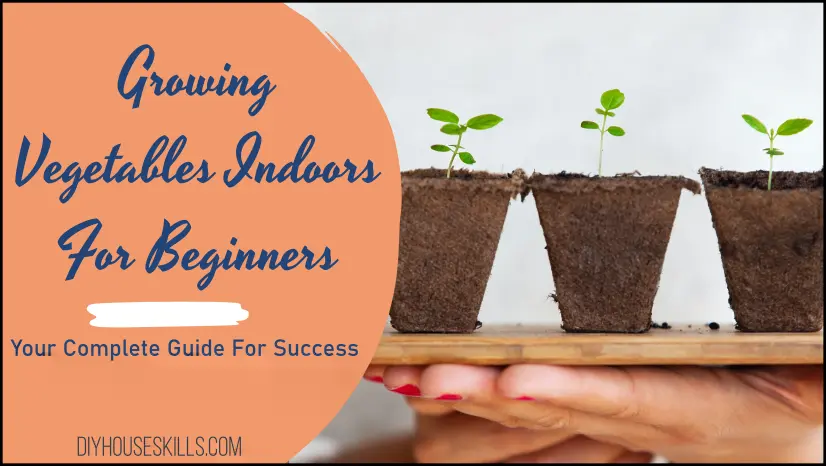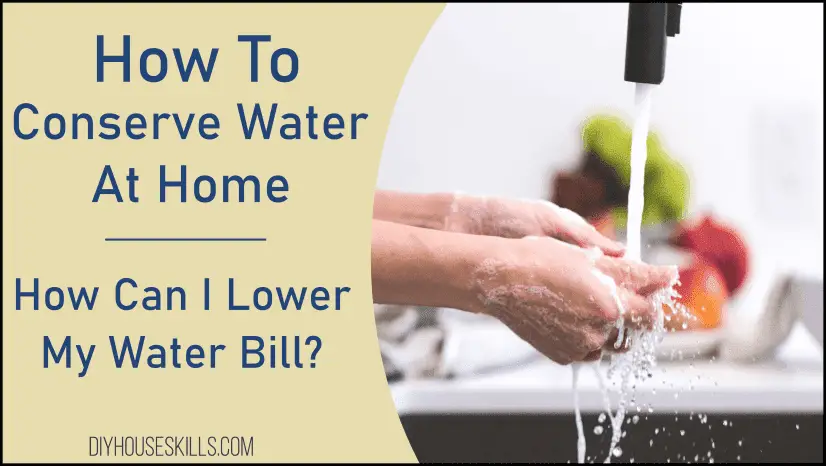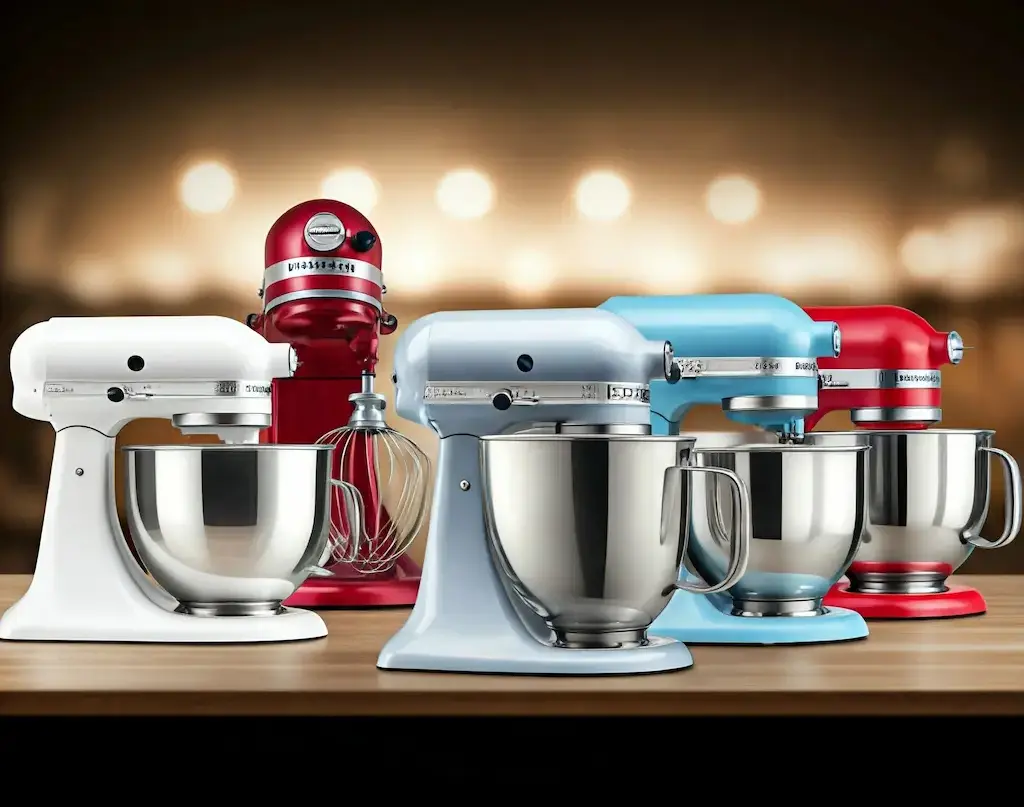An article on the basics of hydroponics: growing plants indoors without soil.
Do you want to learn how to grow plants without soil? Hydroponics is a great way to do just that. In this article, we will discuss the basics of hydroponics and how you can get started using this method.
Hydroponics is becoming more and more popular for people who want to garden indoors, or who live in an area where traditional gardening isn’t possible.
- What is hydroponic gardening?
- Components of a hydroponic system
- What type is best for beginners?
- What you’ll need to get started in hydroponics
- What are the benefits of hydroponics?
- Are there any disadvantages of hydroponics?
- Does a hydroponic system need a pump?
- Hydroponic Growing Tips
- Hydroponics FAQ
- Hydroponics Basics – Summary
THIS POST MAY CONTAIN AFFILIATE LINKS. As an Amazon Associate, I earn from qualifying purchases. PLEASE READ MY DISCLOSURE FOR MORE INFO.
What is hydroponic gardening?
Simply put, it is a method of growing plants without soil. Plants are grown in a solution of water and nutrients, and they are supported by an inert medium, such as gravel or perlite.
There are many benefits to growing plants hydroponically. For one thing, it is much easier to control the environment when you’re not dealing with soil. You can more easily control the temperature, humidity, and light levels when you’re growing plants hydroponically.
Another benefit of hydroponic gardening is that you can grow plants much closer together than you could if they were grown in soil. This is because the roots don’t have to spread out to search for water and nutrients.
What are the basics of hydroponics?
If you’re interested in trying hydroponic gardening, there are a few things you need to know before you get started.
1. Choose a system:
First, you’ll need to choose the right system for your needs. There are many different types of hydroponic systems available, and each one has its own advantages and disadvantages. These include Wick systems, Ebb and Flow systems, NFT systems, Deep water culture (DWC), Drip systems, and Aeroponic systems.
2. Choose a medium:
You’ll also need to choose the right growing medium. As we mentioned before, gravel and perlite are two common options. However, there are many other choices as well, such as vermiculite, coco coir, and Rockwool.
3. Choose the nutrients:
Finally, you’ll need to choose the right nutrients for your plants. There are many different formulas available, and you’ll need to choose one that is specifically designed for plants grown in a hydroponic system.
4. Choose plants:
And of course, you will decide upon the plants you wish to grow. The easiest to grow for beginners are lettuce, spinach, tomatoes, herbs, and peppers.
Let’s take this step-by-step, keep reading.
Components of a hydroponic system
Now let’s explore in more detail what makes up the basics of a hydroponic system.
Explanation of the 6 different hydroponic systems:
As mentioned above, 6 different hydroponic systems exist. We’ll explore these in detail below.
- Wick systems
- Ebb and Flow systems
- Deep water culture (DWC)
- Drip systems
- NFT systems
- Aeroponic systems
1. Wick system:
A wick system is one of the simplest types of hydroponic systems. In this type of system, the roots of the plants are supported by an inert medium, such as perlite. The roots are then placed in a reservoir of water and nutrients. A wick is used to transport the solution from the reservoir to the roots of the plant.
2. Ebb and Flow system:
An Ebb and Flow system is also known as a flood and drain system. In this type of system, the roots of the plants are supported by an inert medium, such as gravel. The plants are then placed in a reservoir of water and nutrients. The solution is pumped from the reservoir to the roots of the plant and then allowed to drain back into the reservoir.
3. Deep water culture (DWC):
A deep water culture system is similar to an Ebb and Flow system, except that the roots of the plants are always submerged in the solution. The solution is pumped from the reservoir to the roots of the plant and then allowed to drain back into the reservoir.
4. Drip system:
A drip system is a type of hydroponic system that uses a timer to control the flow of water and nutrients to the roots of the plant. The solution is pumped from the reservoir to the roots of the plant and then allowed to drain back into the reservoir.
5. NFT system:
An NFT system is a type of hydroponic system that uses a network of pipes to transport the solution from the reservoir to the roots of the plant. The solution is then allowed to drain back into the reservoir.
6. Aeroponic system:
An aeroponic system is a type of hydroponic system that uses mist to transport the solution from the reservoir to the roots of the plant. The roots are then supported by an inert medium, such as Rockwool. The process is completed by allowing the liquid to seep back into the reservoir.
What type is best for beginners?
Beginners just getting started in hydroponics should choose either a wick system, an Ebb and Flow system, or a Deep water culture (DWC) system. These systems are relatively easy to set up and maintain.
Want to dive a little deeper? Check out this new e-book: Getting Started In Hydroponics: Expert Tips, Plans & Secrets. It provides you with the quickest, easiest hydroponics system to build. You can get started in hours rather than days and the system is built from common materials so you can save money. It is an affiliate link in which I get paid a commission.
What type is best for large-scale production?
For those interested in large-scale production, a drip system or an NFT system is a better choice. These systems can be scaled up to accommodate a large number of plants.
What type is best for small-scale production?
Aeroponic systems are best for small-scale production. These systems can be used to grow a wide variety of plants and can be easily scaled down to accommodate a smaller number of plants.
- How To Conserve Water At Home | How Can I Lower My Water Bill?
- Outdoor Pizza Oven Buying Guide | How to Buy
- Top Stand Mixers on Amazon: Most Wished For
What you’ll need to get started in hydroponics
To get started in hydroponics, you’ll need a few things:
- A water reservoir
- An inert medium
- A pump
- A timer
- Water and nutrients
- A light source
- Plants
Instructions:
Choose or buy a water reservoir. It should be big enough to hold all the plants you want to grow, plus extra water. You can use a plastic storage bin, an aquarium, or anything else that will hold water.
- Fill the reservoir with water and nutrients. You can buy nutrients at a gardening store or online.
- Add your plants to the reservoir. If you’re using a plastic storage bin, you can cut holes in the sides and bottom for the plants.
- Setup the growing medium. You’ll need an inert medium to support the roots of the plants. Some common options are perlite, gravel, and Rockwool.
- Add a pump to the reservoir. The pump will circulate the water and nutrients to the roots of the plants. The pump will need to be big enough to circulate all the water in the reservoir. The timer will be used to turn the pump on and off. Turn on the pump and let it circulate the water for a few hours.
- Place a grow light, if using, above the growing medium. Or use natural light if possible. The plants will need light to photosynthesize.
- Monitor the reservoir and add water as needed. The roots of the plants will absorb water from the reservoir. You’ll need to add water to the reservoir as the plants grow.
- Harvest your plants when they’re ready.
Hydroponic growing kits:
You can find kits online that make the whole process easier. These kits come with everything you need to get started, including the reservoir, grow medium, pump, timer, and nutrients.
I reviewed and selected the 5 Best Indoor Garden Systems which covers the different systems available, their pros and cons, as well as a few tips for getting started.
If you’re looking for my top pick, I recommend you select the AeroGarden Harvest. It is a top-quality medium-sized unit that fits nicely on any countertop.
Find the Garden That’s Right for You – Shop AeroGarden’s Indoor Gardens Today!
Hydroponics for beginners PDF:
Want a downloadable PDF e-book to help you get started, plus complete plans for 5 hydroponic mini gardens, how to build a system, and bonus material?
Get the PDF: Getting Started In Hydroponics: Expert Tips, Plans & Secrets for only $37. It is over 260 pages of info.
What are the benefits of hydroponics?
Hydroponics has a number of benefits over traditional soil-based gardening:
- Plants grown in a hydroponic system can grow up to 50% faster than plants grown in soil.
- Hydroponics uses less water than soil-based gardening.
- There is no need for weeding with hydroponics.
- Hydroponic systems can be controlled to provide the perfect environment for plants to thrive.
Plus, growing plants hydroponically is just fun and a great learning experience.
Are there any disadvantages of hydroponics?
The only real disadvantage of hydroponics is the initial cost of setting up a system. Hydroponic systems can be expensive to set up, but they can save you money in the long run.
Does a hydroponic system need a pump?
Yes, a hydroponic system performs the best with a pump to circulate the water and nutrients to the roots of the plants. The size of the pump will depend on the size of the reservoir.
A small reservoir will require a smaller pump, while a large reservoir will require a larger pump. The timer is used to turn the pump on and off.
Basics of hydroponics growing tips
Now, let’s give some growing tips for the beginner hydroponic gardener.
Tip # 1
Choose the right location for your system. The location should get plenty of light and be close to a water source.
Tip # 2
Start with a small number of plants. It’s better to start small and add more plants as you get comfortable with the system.
Tip # 3
Monitor the pH of the water. The ideal pH for most plants is between six and seven. You can purchase a pH test kit at a gardening store or online.
Tip # 4
Choose the right plants. Some plants, like tomatoes, require more attention than others. Start with easy-
Tip # 5
Check the roots of the plants regularly. The roots should be white and healthy-looking. If they’re brown or mushy, it’s a sign that something is wrong with the system.
With these basics, you should be well on your way to success with hydroponics.
Basics of hydroponics FAQ
Yes, hydroponics is a great option for beginners. Hydroponic systems can be simple or complex, and they can be set up indoors or outdoors.
The most common mistakes made in hydroponics are overwatering, underwatering, and not monitoring the pH of the water.
Just about any plant can be grown in a hydroponic system. Some plants, like tomatoes, require more attention than others. Start with easy-to-grow plants like lettuce or herbs.
The best hydroponic system for beginners is the Wick system. The Wick system is a simple, passive system that doesn’t require a pump or timer.
The ideal pH for most plants is between six and seven. You can purchase a pH test kit at a gardening store or online. To adjust the pH of the water, add pH Up or pH Down according to the instructions on the bottle.
The type of light used for hydroponics depends on the type of plants you’re growing. For most plants, fluorescent or LED lights are sufficient. If you’re growing plants that require more light, such as tomatoes, you’ll need to use high-intensity discharge (HID) lights.
Yes, you can use any type of seed for hydroponics. However, some seeds are easier to germinate than others. If you’re just starting out, it’s best to use seeds that are easy to germinate, such as lettuce or herbs.
Basics of Hydroponics – Summary
So, there you have it. The basics of hydroponics. Now that you know how it works, you can start experimenting with different systems and growing your own.
If you’re looking for my recommendation, I suggest you select AeroGarden Harvest. It is a top-quality medium-sized unit that fits nicely on any countertop.
